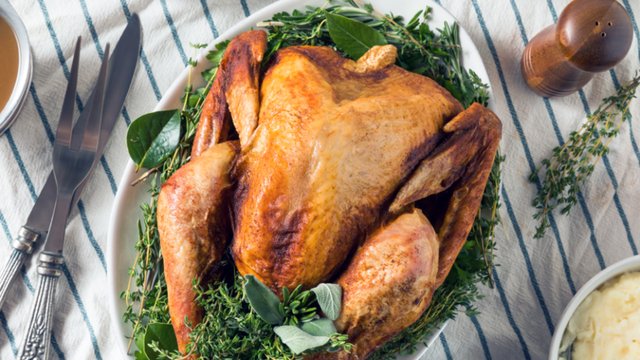
California Poison Control (CPCS) wants to ensure that Thanksgiving meals this year are memorable for good reasons, not bad ones — like having an uninvited “guest” who joins the festivities and sends everyone to the emergency room to be treated for food poisoning. For the elderly, children, pregnant women, and people suffering from compromised immune systems, food poisoning can be severe and sometimes fatal.
Foodborne illnesses — or food poisoning — occur when food is eaten that has been contaminated with disease-causing germs, such as bacteria, parasites or viruses. Food poisoning generally causes stomach pain, vomiting and diarrhea and usually appears within four to 12 hours after eating or drinking contaminated food or drink.
According to the CDC, the resultant bout of unpleasant gastrointestinal symptoms from food poisoning leads to an estimated 1 in 6 people (or 48 million) getting sick, 128,000 being hospitalized, and 3,000 dying from foodborne diseases every year.
“Thanksgiving is a prime time for foodborne illnesses because many people don’t properly cook, store, and reheat their Thanksgiving feasts,” said Rais Vohra, the medical director for the Fresno/Madera Division of CPCS. “Food poisoning is extremely preventable. By following simple handling, cooking and storage suggestions, people can stay healthy and enjoy the holidays.”
To avoid food poisoning this Thanksgiving, as well as throughout the year, Dr. Vohra offers these eight safety tips:
1. Wash your hands often with soap and water especially in between handling foods that are wet or dry.
2. Be sure to wash counters, cutting boards, and utensils in between recipes with soap and hot water or a sanitizer. You want to avoid cross-contamination; this is especially critical if you are cutting raw meat or leafy greens, or are chopping fruits or vegetables that will be served raw.
3. Turkey
• Fresh turkeys should be refrigerated immediately.
• Thaw frozen turkeys in the refrigerator; never leave it on the counter at room temperature. Allow it enough time to thaw (24 hours of thaw time per five pounds of turkey). As the bird thaws, water will accumulate, so keep the bird in a high walled pan and do not let the water touch any other food. To be safe, keep it on a bottom shelf.
• Do not rinse a turkey as that spreads salmonella.
• Cook the turkey and stuffing thoroughly. Use a food thermometer to make sure both reach an internal temperature of 165 degrees F.
4. Bring gravy made from scratch to a full boil before serving.
5. Rinse fruits and vegetables thoroughly under cool running water and use a produce brush to remove surface dirt.
6. Keep cold food like salads, gelatin molds, and salad dressing refrigerated at 35 degrees F until just before serving.
7. Purchase pasteurized eggs to use in recipes that call for raw eggs. Store bought cookie dough and eggnog should be safe. Remember do not eat raw dough or batter, it can make you sick.
8. Leftovers
• Once dinner is over, refrigerate the leftovers promptly. Food is not safe to eat if it has been sitting out for two hours or more. Toss it.
• After taking the remaining meat off the bird, store in a shallow container in the refrigerator. Don’t put an entire carcass into the refrigerator; it won’t cool down quickly enough.
• Cooked turkey and other leftovers can be safely kept in the refrigerator for three to four days. After that, the risk of food poisoning increases. Freeze leftovers to store them for a longer period.
• Reheat all leftovers to at least 165 degrees F before serving or eating.
